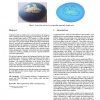Free Online Productivity Tools
i2Speak
i2Symbol
i2OCR
iTex2Img
iWeb2Print
iWeb2Shot
i2Type
iPdf2Split
iPdf2Merge
i2Bopomofo
i2Arabic
i2Style
i2Image
i2PDF
iLatex2Rtf
Sci2ools
SMA
2006
ACM
2006
ACM
Segmenting reliefs on triangle meshes
Sculptural reliefs are widely used in various industries for purposes such as applying brands to packaging and decorating porcelain. In order to easily apply reliefs to CAD models, it is often desirable to reverse-engineer previously designed and manufactured reliefs. 3D scanners can generate triangle meshes from objects with reliefs; however, previous mesh segmentation work has not considered the particular problem of separation of reliefs from background. We consider here the specific case of segmenting a simple relief delimited by a single outer contour, which lies on a smooth, slowly varying background. Generally, such reliefs meet the surrounding surface in a small step, enabling us to devise a specific method for such relief segmentation. We find the boundary between the background and the relief using an adaptive snake. It starts at a simple user-drawn contour, and is driven inwards by a collapsing force until it matches the relief’s boundary. Our method is insensitive to ...
| Added | 14 Jun 2010 |
| Updated | 14 Jun 2010 |
| Type | Conference |
| Year | 2006 |
| Where | SMA |
| Authors | Shenglan Liu, Ralph R. Martin, Frank C. Langbein, Paul L. Rosin |
Comments (0)

